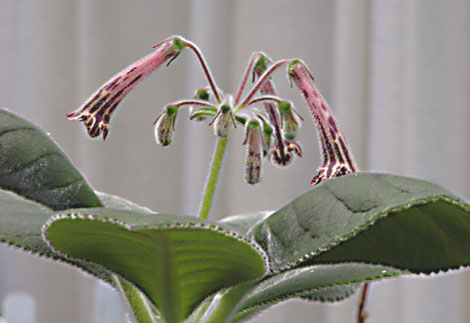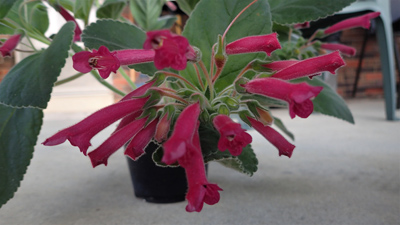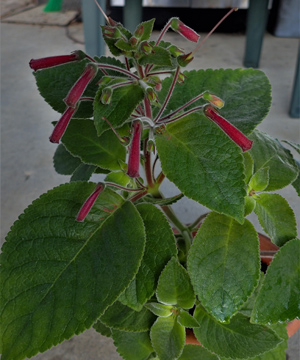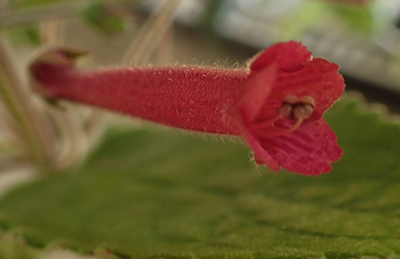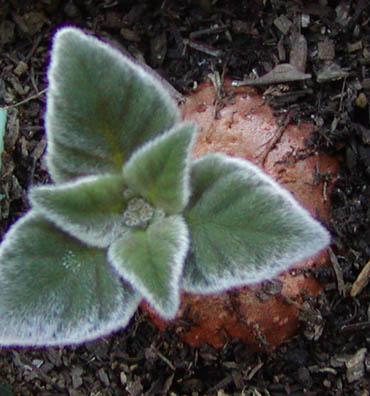
|
A mature plant of S. piresiana
will usually have two whorls of three leaves each,
as shown in this picture.
In that regard, it is similar to
S. douglasii.
Flowerbuds can be seen at the center of the plant.
This is characteristic of this species, that the flowerbuds
are formed very early in the development of new shoots in the spring.
Under my conditions,
Sinningia piresiana
comes out of dormancy rather later than most other species,
from mid-April to the beginning of May.
Even small tubers have this pattern, and it seems
to be inherited by at least some of my
S. piresiana hybrids as well.
With some sinningia species of determinate growth,
such as S. leucotricha
and S. lineata,
a second bloom period per year can be achieved by cutting
off the blooming stem as soon as the last flower has fallen.
I have tried this with S. piresiana,
and gotten new stems, but they did not bloom.
So far, one flowering per year appears to be the maximum.
|
